amazon Alcoholic Beverages Product Listing and Content

Please note that you have sole responsibility for ensuring that your offers comply with legal requirements. Amazon cannot advise you on legal issues. If you are unsure which information you need to provide for your product, or if you have questions with respect to legislative requirements, we recommend that you seek independent legal advice.
This Style Guide will help you to offer your products effectively and to maximize your sales.
Your commercial success at Amazon.co.uk depends on the quality of product information filed. The product details page replaces the traditional consumer consultation. Product offers, which are correctly set out in detail, with a consistent title and product images, will be easier for customers to find and so will sell more often and be returned less often.
Comprehensive product information also means that the pages will be found more easily and more quickly by search engines. The more content you provide on your product page, the higher the likelihood that the page will rank higher in leading search engines and will therefore be found and called up by more visitors.
Further information on this topic is provided in Seller Central:
– Classification lists (Browse Tree Guides) for Alcoholic Beverages– Flat File to upload your Alcoholic Beverages
Sales restriction for the alcoholic beverages category
Please note that there is a restricted admissions policy for alcoholic drinks (product types: “WINE”, “SPIRITS” and “BEER”). If you have not applied for approval to sell in this category, please contact Seller Support.
You are obliged to ensure that products which are subject to an age restriction are not sold to persons under the statutory minimum age. If in doubt, please take independent legal advice.
Title
Good product titles build customer confidence in you as a seller.
The product title is the first impression that customers have of your product and it is an opportunity to convince the customer of your professionalism and quality as a seller. Keep your title concise, informative and accurate in accordance with the syntax recommended by Amazon (see point 2. Constructing the title).Please note that, at Amazon, there is only one product details page for each product, even where several sellers offer this product.Therefore, the product title and description must never contain information that only applies to a specific seller. Non-compliance with this principle can lead to suppression of your listing in this category.
1. Product title requirements
![]() Right
Right
![]()
![]()
![]()
![]()
![]()
![]()
![]()
![]()
![]()
![]()
![]()
![]()
![]()
![]()
![]()
![]()
![]()
![]()
![]()
![]()
![]()
![]()
![]()
![]()
![]()
![]()
![]()
![]()
![]()
![]()
![]()
![]()
![]()
![]()
![]()
![]()
![]()
![]()
![]()
![]()
![]()
![]()
![]()
![]()
![]()
![]()
![]()
![]()
![]()
![]()
![]()
![]()
![]()
![]()
![]()
![]()
![]()
![]()
![]()
![]()
![]()
![]()
![]()
![]()
![]()
![]()
![]()
![]()
![]()
![]()
![]()
![]()
![]()
![]()
![]()
![]()
![]()
![]()
![]()
![]()
![]()
![]()
![]()
![]()
![]()
![]()
![]()
![]()
![]()
![]()
![]()
![]()
![]()
![]()
![]()
![]()
![]()
![]()
![]()
![]()
![]()
![]()
![]()
![]()
![]()
![]()
![]()
![]()
![]()
![]()
![]()
![]()
![]()
![]()
![]()
![]()
![]()
![]()
![]()
![]()
![]()
![]()
![]()
![]()
![]()
![]()
![]()
![]()
![]()
![]()
![]()
![]()
![]()
![]()
![]()
![]()
![]()
![]()
![]()
![]()
![]()
![]()
![]()
![]()
![]()
![]()
![]()
![]()
![]()
![]()
![]()
![]()
![]()
![]()
![]()
![]()
![]()
![]()
![]()
![]()
![]()
![]()
![]()
![]()
![]()
![]()
![]()
![]()
![]()
![]()
![]()
![]()
![]()
![]()
![]()
![]()
![]()
![]()
![]()
![]()
![]()
![]()
![]()
![]()
![]()
![]()
![]()
![]()
![]()
![]()
![]()
![]()
![]()
![]()
![]()
![]()
![]()
![]()
![]()
![]()
![]()
![]()
![]()
![]()
![]()
![]()
![]()
![]()
![]()
![]()
![]()
![]()
![]()
![]()
![]()
![]()
![]()
![]()
![]()
![]()
![]()
![]()
![]()
![]()
![]()
![]()
![]()
![]()
![]()
![]()
![]()
![]()
![]()
![]()
![]()
![]()
![]()
![]()
![]()
![]()
![]()
![]()
![]()
![]()
![]()
![]()
![]()
![]()
![]()
![]()
![]()
![]()
![]()
![]()
![]()
![]()
![]()
![]()
![]()
![]()
![]()
![]()
![]()
![]()
![]()
![]()
![]()
![]()
![]()
![]()
![]()
![]()
![]()
![]()
![]()
![]()
![]()
![]()
![]()
![]()
![]()
![]()
![]()
![]()
![]()
![]()
![]()
![]()
![]()
![]()
![]()
![]()
![]()
![]()
![]()
![]()
![]()
![]()
![]()
![]()
![]()
![]()
![]()
![]()
![]()
![]()
![]()
![]()
![]()
![]()
![]()
![]()
![]()
![]()
![]()
![]()
![]()
![]()
![]()
![]()
![]()
![]()
![]()
![]()
![]()
![]()
![]()
![]()
![]()
![]()
![]()
![]()
![]()
![]()
![]()
![]()
![]()
![]()
![]()
![]()
![]()
![]()
![]()
![]()
![]()
![]()
![]()
![]()
![]()
![]()
![]()
![]()
![]()
![]()
![]()
![]()
![]()
![]()
![]()
![]()
![]()
![]()
![]()
![]()
![]()
![]()
![]()
![]()
![]()
![]()
![]()
![]()
![]()
![]()
![]()
![]()
![]()
![]()
![]()
![]()
![]()
![]()
![]()
![]()
![]()
![]()
![]()
![]()
![]()
![]()
![]()
![]()
![]()
![]()
![]()
![]()
![]()
![]()
![]()
![]()
![]()
![]()
![]()
![]()
![]()
![]()
![]()
![]()
![]()
![]()
![]()
![]()
![]()
![]()
![]()
![]()
![]()
![]()
![]()
![]()
![]()
![]()
![]()
![]()
![]()
![]()
![]()
![]()
![]()
![]()
![]()
![]()
![]()
![]()
![]()
![]()
![]()
![]()
![]()
![]()
![]()
![]()
![]()
![]()
![]()
![]()
![]()
![]()
![]()
![]()
![]()
![]()
![]()
![]()
![]()
![]()
![]()
![]()
![]()
![]()
![]()
![]()
![]()
![]()
![]()
![]()
![]()
![]()
![]()
![]()
![]()
![]()
![]()
![]()
![]()
![]()
![]()
![]()
![]()
![]()
![]()
![]()
![]()
![]()
![]()
![]()
![]()
![]()
![]()
![]()
![]()
![]()
![]()
![]()
![]()
![]()
![]()
![]()
![]()
![]()
![]()
![]()
![]()
![]()
![]()
![]()
![]()
![]()
![]()
![]()
![]()
![]()
![]()
![]()
![]()
![]()
![]()
![]()
![]()
![]()
![]()
![]()
![]()
![]()
![]()
![]()
![]()
![]()
![]()
![]()
![]()
![]()
![]()
![]()
![]()
![]()
![]()
![]()
![]()
![]()
![]()
![]()
![]()
![]()
![]()
![]()
![]()
![]()
![]()
![]()
![]()
![]()
![]()
![]()
![]()
![]()
![]()
![]()
![]()
![]()
![]()
![]()
![]()
![]()
![]()
![]()
![]()
![]()
![]()
![]()
![]()
![]()
![]()
![]()
![]()
![]()
![]()
![]()
![]()
![]()
![]()
![]()
![]()
![]()
![]()
![]()
![]()
![]()
![]()
![]()
![]()
![]()
![]()
![]()
![]()
![]()
![]()
![]()
![]()
![]()
![]()
![]()
![]()
![]()
![]()
![]()
![]()
![]()
![]()
![]()
![]()
![]()
![]()
![]()
![]()
![]()
![]()
![]()
![]()
![]()
2. Constructing the title
The format of the title on Amazon in the Alcoholic Beverages category is as follows:
For wine and champagne – elements to be used, insofar as these apply:
[Brand/vineyard] + [Product Name] + [Ingredients / Primary Grape Variety] + [Vintage] + [Sweetness] + [No. of Bottles] “x” [Net Volume of Product (in l)])
Product title examples:
“Langmeil Valley Floor Shiraz 2012 Dry (6 x 0.75 l)““Rotwild Dornfelder 2013 Dry (1 x 0.75 l)““Peter Mertes Wine Package Germany Organic (6 x 0.75 l)““Moët & Chandan Imperials Pinot Noir Dry (1 x 0.75 l)“Special cases: For mixed packages do not specify vintage and flavour. For ingredients, specify or omit “cuvee”. However, if all bottles are the same vintage and flavor, this information can be given in the title.
For spirits and beer – elements to be used, insofar as these apply:
[Brand] + [Product name] + [Alcohol Type] + ([No. of Bottles] “x” [Net Volume of Product (in l)])
Product title examples:“Lagavulin Single Malt Whisky (1 x 0.7 l)”“Becks Gold Pils (6 x 0.33 l)”“Frangelico Hazelnut Liqueur (1 x 0.7 l)”
3. Examples of good and bad images:
![]()
![]()
![]()
![]()
![]()
![]()
![]()
![]()
![]()
![]()
![]()
![]()
![]()
![]()
![]()
![]()
![]()
![]()
![]()
![]()
![]()
![]()
![]()
![]()
![]()
![]()
![]()
![]()
![]()
![]()
![]()
![]()
![]()
![]()
![]()
![]()
![]()
![]()
![]()
![]()
![]()
![]()
![]()
![]()
![]()
![]()
![]()
![]()
![]()
![]()
![]()
![]()
![]()
![]()
![]()
![]()
![]()
![]()
![]()
![]()
![]()
![]()
![]()
![]()
![]()
![]()
![]()
![]()
![]()
![]()
![]()
![]()
![]()
![]()
![]()
![]()
![]()
![]()
![]()
![]()
![]()
![]()
![]()
![]()
![]()
![]()
![]()
![]()
![]()
![]()
![]()
![]()
![]()
![]()
![]()
![]()
![]()
![]()
![]()
![]()
![]()
![]()
![]()
![]()
![]()
![]()
![]()
![]()
![]()
![]()
![]()
![]()
![]()
![]()
![]()
![]()
![]()
![]()
![]()
![]()
![]()
![]()
![]()
![]()
![]()
![]()
![]()
![]()
![]()
![]()
![]()
![]()
![]()
![]()
![]()
![]()
![]()
![]()
![]()
![]()
![]()
![]()
![]()
![]()
![]()
![]()
![]()
![]()
![]()
![]()
![]()
![]()
![]()
![]()
![]()
![]()
![]()
![]()
![]()
![]()
![]()
![]()
![]()
![]()
![]()
![]()
![]()
![]()
![]()
![]()
![]()
![]()
![]()
![]()
![]()
![]()
![]()
![]()
![]()
![]()
![]()
![]()
![]()
![]()
![]()
![]()
![]()
![]()
![]()
![]()
![]()
![]()
![]()
![]()
![]()
![]()
![]()
![]()
![]()
![]()
![]()
![]()
![]()
![]()
![]()
![]()
![]()
![]()
![]()
![]()
![]()
![]()
![]()
![]()
![]()
![]()
![]()
![]()
![]()
![]()
![]()
![]()
![]()
![]()
![]()
![]()
![]()
![]()
![]()
![]()
![]()
![]()
![]()
![]()
![]()
![]()
![]()
![]()
![]()
![]()
![]()
![]()
![]()
![]()
![]()
![]()
![]()
![]()
![]()
![]()
![]()
![]()
![]()
![]()
![]()
![]()
![]()
![]()
![]()
![]()
![]()
![]()
![]()
![]()
![]()
![]()
![]()
![]()
![]()
![]()
![]()
![]()
![]()
![]()
![]()
![]()
![]()
![]()
![]()
![]()
![]()
![]()
![]()
![]()
![]()
![]()
![]()
![]()
![]()
![]()
![]()
![]()
![]()
![]()
![]()
![]()
![]()
![]()
![]()
![]()
![]()
![]()
![]()
![]()
![]()
![]()
![]()
![]()
![]()
![]()
![]()
![]()
![]()
![]()
![]()
![]()
![]()
![]()
![]()
![]()
![]()
![]()
![]()
![]()
![]()
![]()
![]()
![]()
![]()
![]()
![]()
![]()
![]()
![]()
![]()
![]()
![]()
![]()
![]()
![]()
![]()
![]()
![]()
![]()
![]()
![]()
![]()
![]()
![]()
![]()
![]()
![]()
![]()
![]()
![]()
![]()
![]()
![]()
![]()
![]()
![]()
![]()
![]()
![]()
![]()
![]()
![]()
![]()
![]()
![]()
![]()
![]()
![]()
![]()
![]()
![]()
![]()
![]()
![]()
![]()
![]()
![]()
![]()
![]()
![]()
![]()
![]()
![]()
![]()
![]()
![]()
![]()
![]()
![]()
![]()
![]()
![]()
![]()
![]()
![]()
![]()
![]()
![]()
![]()
![]()
![]()
![]()
![]()
![]()
![]()
![]()
![]()
![]()
![]()
![]()
![]()
![]()
![]()
![]()
![]()
![]()
![]()
![]()
![]()
![]()
![]()
![]()
![]()
![]()
![]()
![]()
![]()
![]()
![]()
![]()
![]()
![]()
![]()
![]()
![]()
![]()
![]()
![]()
![]()
![]()
![]()
![]()
![]()
![]()
![]()
![]()
![]()
![]()
![]()
![]()
![]()
![]()
![]()
![]()
![]()
![]()
![]()
![]()
![]()
![]()
![]()
![]()
![]()
![]()
![]()
![]()
![]()
![]()
![]()
![]()
![]()
![]()
![]()
![]()
![]()
![]()
![]()
Product images
Clear and informative images which allow clear recognition of the product offered and are of key significance for your sales.Positive and varied product images play an important role in the decision to purchase. Ideally, your images will be high resolution, so that the zoom function can be used. In addition, it is highly recommended that you prepare several pictures featuring different viewpoints or detail views. Product images should not contain text, watermarks or logos.
1. Minimum requirements:
- The image must have a minimum size of 500 pixels along the longest length. Zoom can be used for images from a size of 1200 pixels.
- The product must take up 80% – 90% of the total area of the image. The whole product must be represented in the image (no part of the product may be cropped out).
- The product must be clearly discernible, illuminated and depicted from an informative perspective. It is fundamental that the customer purchases everything represented in the image.
- If one bottle is offered in the Product Description, then only one bottle should be shown in the image.
- If a product is offered, for example, in a 6-pack, the product photo must show 6 bottles next to each other (not inset).
- Images must be free from text, borders, frames, logos, labels, pricing or other notices and watermarks.
- For the main image, the image background must be 100% white (RGB 255,255,255 – this requires editing). A light shadow to separate the product from the image background is permitted.
- For additional product images, coloured backgrounds are permitted and the product can be portrayed in the environment in which it is used. However, the background should not distract from the product offered. Text, schematic representations and drawings are allowed so long as they contribute to an explanation of the product.
- If the product can be purchased in different designs (e.g. flavours) a separate picture must be provided for each of these variations.
- Images must be provided in JPG format with RGB colour model (images using the CMYK colour model will be rejected by the system).
- Please do not use any placeholders such as “Image unavailable”.
2. The different types of product image:
In the Amazon catalogue, several images can be displayed for the same product. Main images for all parent ASINs (= parent items) and child ASINs (= child items) are the minimum you need to provide. We do recommend, however, that you provide further, highres product images, as these will serve to better inform your customers and to assist them with their decision to purchase.
Parent ASIN main image: You must provide a parent main image which shows the product you are providing.
Child ASIN main image: Each child ASIN must have a main image which, for example, portrays the respective size or flavour. You must provide a child main image for each variant in which you sell the product.Alternative images: Alternative images show different views of the product to better portray the back of the bottle, gift wrapping or serving suggestions. You can provide up to 8 alternative images per parent ASIN and child ASIN.
3. Examples of good and bad images
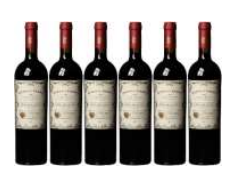  |
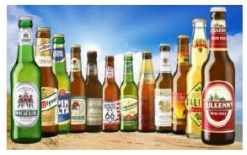  |
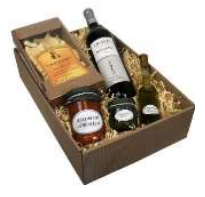  |
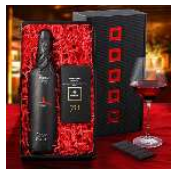  |
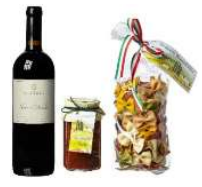  |
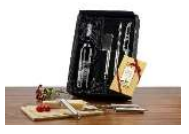  |
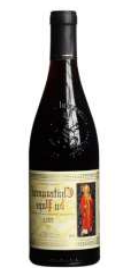  |
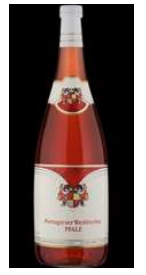  |
  |
  |
Detailed information
Products that are set out correctly, in detail and comprehensibly, are more easily found by the customer and therefore sellmore often.In addition to good product titles and good product images, your commercial success at Amazon.co.uk depends on the quality ofthe product information field.
1. Key principles for optimal visibility and data quality
- Product data and product details provided in full enable customers to find your products easily and quickly.
- Positive and comprehensive product descriptions can increase sales and help to reduce the number of returns.Only use official manufacturer specifications. Compose your product descriptions as individual, continuous text as far as possible; these descriptions need to replace the traditional consumer consultation.
- Give your products a specific Browse Node ID (always the lowest/most detailed browse node), in order to facilitate visibility in filter and search requests.
- Search terms facilitate visibility of your product even where synonyms are input.
2. Bullet Points – Highlights
- The product Highlights on the details page provide the customer with additional information about your product.
- Take care to present your information in a short and succinct way here. You can provide lengthier product descriptions in the Product Description.
- Indicate the five key features of your item.
- Begin each point with an upper case letter.
- Write out all numbers.
- Separate phrases with semi-colons for Highlights with multiple phrases.
- Abbreviate indications of size e.g. milliliters or centimeters, as follows: Milliliter: ml.
- Avoid punctuation marks such as hyphens, symbols, full stops and exclamation marks.
- Avoid using vague phraseology; use the clearest possible product features.
- Do not use any pricing and promotional information. Notices in relation to shipping or company informationare not permitted. Amazon details already include this information.
- For wine please comply with the following structure:
- Wine description: Here, repeat the contents from the attribute “short_product_description”.
- Recommendation: Here, repeat the contents from the attribute “suggested_food_pairing”.
- Country of origin + region + sub-region: Here, repeat the contents from the attributes“country_string”, “region_of_origin” and “subregion_of_origin”.
- Further good Highlights are: Awards, closure type, drinking temperature etc.
![]()
![]()
![]()
![]()
![]()
![]()
![]()
![]()
![]()
![]()
![]()
![]()
![]()
![]()
![]()
![]()
![]()
![]()
![]()
![]()
![]()
![]()
![]()
![]()
![]()
![]()
![]()
![]()
![]()
![]()
![]()
![]()
![]()
![]()
![]()
![]()
![]()
![]()
![]()
![]()
![]()
![]()
![]()
![]()
![]()
![]()
![]()
![]()
![]()
![]()
![]()
![]()
![]()
![]()
![]()
![]()
![]()
![]()
![]()
![]()
![]()
![]()
![]()
![]()
![]()
![]()
![]()
![]()
![]()
![]()
![]()
![]()
![]()
![]()
![]()
![]()
![]()
![]()
![]()
![]()
![]()
![]()
![]()
![]()
![]()
![]()
![]()
![]()
![]()
![]()
![]()
![]()
![]()
![]()
![]()
![]()
![]()
![]()
![]()
![]()
![]()
![]()
![]()
![]()
![]()
![]()
![]()
![]()
![]()
![]()
![]()
![]()
![]()
![]()
![]()
![]()
![]()
![]()
![]()
![]()
![]()
![]()
![]()
![]()
![]()
![]()
![]()
![]()
![]()
![]()
![]()
![]()
![]()
![]()
![]()
![]()
![]()
![]()
![]()
![]()
![]()
![]()
![]()
![]()
![]()
![]()
![]()
![]()
![]()
![]()
![]()
![]()
![]()
![]()
![]()
![]()
![]()
![]()
![]()
![]()
![]()
![]()
![]()
![]()
![]()
![]()
![]()
![]()
![]()
![]()
![]()
![]()
![]()
![]()
![]()
![]()
![]()
![]()
![]()
![]()
![]()
![]()
![]()
![]()
![]()
![]()
![]()
![]()
![]()
![]()
![]()
![]()
![]()
![]()
![]()
![]()
![]()
![]()
![]()
![]()
![]()
![]()
![]()
![]()
![]()
![]()
![]()
![]()
![]()
![]()
![]()
![]()
![]()
![]()
![]()
![]()
![]()
![]()
![]()
![]()
![]()
![]()
![]()
![]()
![]()
![]()
![]()
![]()
![]()
![]()
![]()
![]()
![]()
![]()
![]()
![]()
![]()
![]()
![]()
![]()
![]()
![]()
![]()
![]()
![]()
![]()
![]()
![]()
![]()
![]()
![]()
![]()
![]()
![]()
![]()
![]()
![]()
![]()
![]()
![]()
![]()
![]()
![]()
![]()
![]()
![]()
![]()
![]()
![]()
![]()
![]()
![]()
![]()
![]()
![]()
![]()
![]()
![]()
![]()
![]()
![]()
![]()
![]()
![]()
![]()
![]()
![]()
![]()
![]()
![]()
![]()
![]()
![]()
![]()
![]()
![]()
![]()
![]()
![]()
![]()
![]()
![]()
![]()
![]()
![]()
![]()
![]()
![]()
![]()
![]()
![]()
![]()
![]()
![]()
![]()
![]()
![]()
![]()
![]()
![]()
![]()
![]()
![]()
![]()
![]()
![]()
![]()
![]()
![]()
![]()
![]()
![]()
![]()
![]()
![]()
![]()
![]()
![]()
![]()
![]()
![]()
![]()
![]()
![]()
![]()
![]()
![]()
![]()
![]()
![]()
![]()
![]()
![]()
![]()
![]()
![]()
![]()
![]()
![]()
![]()
![]()
![]()
![]()
![]()
![]()
![]()
![]()
![]()
![]()
![]()
![]()
![]()
![]()
![]()
![]()
![]()
![]()
![]()
![]()
![]()
![]()
![]()
![]()
![]()
![]()
![]()
![]()
![]()
![]()
![]()
![]()
![]()
![]()
![]()
![]()
![]()
![]()
![]()
![]()
![]()
![]()
![]()
![]()
![]()
![]()
![]()
![]()
![]()
![]()
![]()
![]()
![]()
![]()
![]()
![]()
![]()
![]()
![]()
![]()
![]()
![]()
![]()
![]()
![]()
![]()
![]()
![]()
![]()
![]()
![]()
![]()
![]()
![]()
![]()
![]()
![]()
![]()
![]()
![]()
![]()
![]()
![]()
![]()
![]()
![]()
![]()
![]()
![]()
![]()
![]()
![]()
![]()
![]()
![]()
![]()
![]()
![]()
![]()
![]()
![]()
![]()
![]()
![]()
![]()
![]()
![]()
![]()
![]()
![]()
![]()
![]()
![]()
![]()
![]()
![]()
![]()
![]()
![]()
![]()
![]()
![]()
![]()
![]()
![]()
![]()
![]()
![]()
![]()
![]()
![]()
![]()
![]()
![]()
![]()
![]()
![]()
![]()
![]()
![]()
![]()
![]()
![]()
![]()
![]()
![]()
![]()
![]()
![]()
![]()
![]()
![]()
![]()
![]()
![]()
![]()
![]()
![]()
![]()
![]()
![]()
![]()
![]()
![]()
![]()
![]()
![]()
![]()
![]()
![]()
![]()
![]()
![]()
![]()
![]()
![]()
![]()
![]()
![]()
![]()
![]()
![]()
![]()
![]()
![]()
![]()
![]()
![]()
![]()
![]()
![]()
![]()
![]()
![]()
![]()
![]()
![]()
![]()
![]()
![]()
![]()
![]()
![]()
![]()
![]()
![]()
![]()
![]()
![]()
![]()
![]()
![]()
![]()
![]()
![]()
![]()
![]()
![]()
![]()
![]()
![]()
![]()
![]()
![]()
![]()
![]()
![]()
![]()
![]()
![]()
![]()
![]()
![]()
![]()
![]()
![]()
![]()
![]()
![]()
![]()
![]()
![]()
![]()
![]()
![]()
![]()
![]()
![]()
![]()
![]()
![]()
![]()
![]()
![]()
![]()
![]()
![]()
![]()
![]()
![]()
![]()
![]()
![]()
![]()
![]()
![]()
![]()
![]()
![]()
![]()
![]()
![]()
![]()
![]()
![]()
![]()
![]()
![]()
![]()
![]()
![]()
![]()
![]()
![]()
![]()
![]()
![]()
![]()
![]()
![]()
![]()
![]()
![]()
![]()
![]()
![]()
![]()
![]()
![]()
![]()
![]()
![]()
![]()
![]()
![]()
![]()
![]()
![]()
![]()
![]()
![]()
![]()
![]()
![]()
![]()
![]()
![]()
![]()
![]()
![]()
![]()
![]()
![]()
![]()
![]()
![]()
![]()
![]()
![]()
![]()
![]()
![]()
![]()
![]()
![]()
![]()
![]()
![]()
![]()
![]()
![]()
![]()
![]()
![]()
![]()
![]()
![]()
![]()
![]()
![]()
![]()
![]()
![]()
![]()
![]()
![]()
![]()
![]()
![]()
![]()
![]()
![]()
![]()
![]()
![]()
![]()
![]()
![]()
![]()
![]()
![]()
![]()
![]()
![]()
![]()
![]()
![]()
![]()
![]()
![]()
![]()
![]()
![]()
![]()
![]()
![]()
![]()
![]()
![]()
![]()
![]()
![]()
![]()
![]()
![]()
![]()
![]()
![]()
![]()
![]()
![]()
![]()
![]()
![]()
![]()
![]()
![]()
![]()
![]()
![]()
![]()
![]()
![]()
![]()
![]()
![]()
![]()
![]()
![]()
![]()
![]()
![]()
![]()
![]()
![]()
![]()
![]()
![]()
![]()
![]()
![]()
![]()
![]()
![]()
![]()
![]()
![]()
![]()
![]()
![]()
![]()
![]()
![]()
![]()
![]()
![]()
![]()
![]()
![]()
![]()
![]()
![]()
![]()
![]()
![]()
![]()
![]()
![]()
![]()
![]()
![]()
![]()
![]()
![]()
![]()
![]()
![]()
![]()
![]()
![]()
![]()
![]()
![]()
![]()
![]()
![]()
![]()
![]()
![]()
![]()
![]()
![]()
![]()
![]()
![]()
![]()
![]()
![]()
![]()
![]()
![]()
![]()
![]()
![]()
![]()
![]()
![]()
![]()
![]()
![]()
![]()
![]()
![]()
![]()
![]()
![]()
![]()
![]()
![]()
![]()
![]()
![]()
![]()
![]()
![]()
![]()
![]()
![]()
![]()
![]()
![]()
![]()
![]()
![]()
![]()
![]()
![]()
![]()
![]()
![]()
![]()
![]()
![]()
![]()
![]()
![]()
![]()
![]()
![]()
![]()
![]()
![]()
![]()
![]()
![]()
![]()
![]()
![]()
![]()
![]()
![]()
![]()
![]()
![]()
![]()
![]()
![]()
![]()
![]()
![]()
![]()
![]()
![]()
![]()
![]()
![]()
![]()
![]()
![]()
![]()
![]()
![]()
![]()
![]()
![]()
![]()
![]()
![]()
![]()
![]()
![]()
![]()
![]()
![]()
![]()
![]()
![]()
![]()
![]()
![]()
![]()
![]()
![]()
![]()
![]()
![]()
![]()
![]()
![]()
![]()
![]()
![]()
![]()
![]()
![]()
![]()
![]()
![]()
![]()
![]()
![]()
![]()
![]()
![]()
![]()
![]()
![]()
![]()
![]()
![]()
![]()
![]()
![]()
![]()
![]()
![]()
![]()
![]()
![]()
![]()
![]()
![]()
![]()
![]()
![]()
![]()
![]()
![]()
![]()
![]()
![]()
![]()
![]()
![]()
![]()
![]()
![]()
![]()
![]()
![]()
![]()
![]()
![]()
![]()
![]()
![]()
![]()
![]()
![]()
![]()
![]()
![]()
![]()
![]()
![]()
![]()
![]()
![]()
![]()
![]()
![]()
![]()
![]()
![]()
![]()
![]()
![]()
![]()
![]()
![]()
![]()
![]()
![]()
![]()
![]()
![]()
![]()
![]()
![]()
![]()
![]()
![]()
![]()
![]()
![]()
![]()
![]()
![]()
![]()
![]()
![]()
![]()
![]()
![]()
![]()
![]()
![]()
![]()
![]()
![]()
![]()
![]()
![]()
![]()
![]()
![]()
![]()
![]()
![]()
![]()
![]()
![]()
![]()
![]()
![]()
![]()
![]()
![]()
![]()
![]()
![]()
![]()
![]()
![]()
![]()
![]()
![]()
![]()
![]()
![]()
![]()
![]()
![]()
![]()
![]()
![]()
![]()
![]()
![]()
![]()
![]()
![]()
![]()
![]()
![]()
![]()
![]()
![]()
![]()
![]()
![]()
![]()
![]()
![]()
![]()
![]()
![]()
![]()
![]()
![]()
![]()
![]()
![]()
![]()
![]()
![]()
![]()
![]()
![]()
![]()
![]()
![]()
![]()
![]()
![]()
![]()
![]()
![]()
![]()
![]()
![]()
![]()
![]()
![]()
![]()
![]()
![]()
![]()
![]()
![]()
![]()
![]()
![]()
![]()
![]()
![]()
![]()
![]()
![]()
![]()
![]()
![]()
![]()
![]()
![]()
![]()
![]()
![]()
![]()
![]()
![]()
![]()
![]()
![]()
![]()
![]()
![]()
3. Product description
The product description allows you to give a detailed description of the products offered in free, continuous text and replaces the sales pitch. Here, you can provide general information about the manufacturer or the brand and information on the manufacturing process.
![]()
![]()
![]()
![]()
![]()
![]()
![]()
![]()
![]()
![]()
![]()
![]()
![]()
![]()
![]()
![]()
![]()
![]()
![]()
![]()
![]()
![]()
![]()
![]()
![]()
![]()
![]()
![]()
![]()
![]()
![]()
![]()
![]()
![]()
![]()
![]()
![]()
![]()
![]()
![]()
![]()
![]()
![]()
![]()
![]()
![]()
![]()
![]()
![]()
![]()
![]()
![]()
![]()
![]()
![]()
![]()
![]()
![]()
![]()
![]()
![]()
![]()
![]()
![]()
![]()
![]()
![]()
![]()
![]()
![]()
![]()
![]()
![]()
![]()
![]()
![]()
![]()
![]()
![]()
![]()
![]()
![]()
![]()
![]()
![]()
![]()
![]()
![]()
![]()
![]()
![]()
![]()
![]()
![]()
![]()
![]()
![]()
![]()
![]()
![]()
![]()
![]()
![]()
![]()
![]()
![]()
![]()
![]()
![]()
![]()
![]()
![]()
![]()
![]()
![]()
![]()
![]()
![]()
![]()
![]()
![]()
![]()
![]()
![]()
![]()
![]()
![]()
![]()
![]()
![]()
![]()
![]()
![]()
![]()
![]()
![]()
![]()
![]()
![]()
![]()
![]()
![]()
![]()
![]()
![]()
![]()
![]()
![]()
![]()
![]()
![]()
![]()
![]()
![]()
![]()
![]()
![]()
![]()
![]()
![]()
![]()
![]()
![]()
![]()
![]()
![]()
![]()
![]()
![]()
![]()
![]()
![]()
![]()
![]()
![]()
![]()
![]()
![]()
![]()
![]()
![]()
![]()
![]()
![]()
![]()
![]()
![]()
![]()
![]()
![]()
![]()
![]()
![]()
![]()
![]()
![]()
![]()
![]()
![]()
![]()
![]()
![]()
![]()
![]()
![]()
![]()
![]()
![]()
![]()
![]()
![]()
![]()
![]()
![]()
![]()
![]()
![]()
![]()
![]()
![]()
![]()
![]()
![]()
![]()
![]()
![]()
![]()
![]()
![]()
![]()
![]()
![]()
![]()
![]()
![]()
![]()
![]()
![]()
![]()
![]()
![]()
![]()
![]()
![]()
![]()
![]()
![]()
![]()
![]()
![]()
![]()
![]()
![]()
![]()
![]()
![]()
![]()
![]()
![]()
![]()
![]()
![]()
![]()
![]()
![]()
![]()
![]()
![]()
![]()
![]()
![]()
![]()
![]()
![]()
![]()
![]()
![]()
![]()
![]()
![]()
![]()
![]()
![]()
![]()
![]()
![]()
![]()
![]()
![]()
![]()
![]()
![]()
![]()
![]()
![]()
![]()
![]()
![]()
![]()
![]()
![]()
![]()
![]()
![]()
![]()
![]()
*Multi-packs (bundles) / Number of units per packet (Item Package Quantity or IPQ)
Information for multi-packs (bundles) gives the customer information relating to the number of units per packet (IPQ) in one offer. Make absolutely sure that you have entered the right IPQ in the data pool and this will be displayed correctly on the details page.
Note: Most manufacturers assign EANs for individual items and sell these as a set (e.g. “2 for 1”).In order to reduce the error rate on the details pages and to minimize customer confusion, it is important that you provide the IPQ of the item either in a set or as a standalone product.
| Product | Number of units per package
(IPQ) |
Why? |
| Lindt: Nostalgia – Gift Pack with 100 g Pralines | 1 | The customer receives 100g pralines in a package. |
| Columela Extra Fine Olive Oil from Spain 750 ml bottle (Pack of 2) | 2 | The customer receives two 750ml bottles. |
Note: Provide the number of items that you are selling in the product file. This should prevent different entries for the same product being found on the details pages.
Please take care to provide the quantities of your products. You can only use one ASIN for one quantity. If you want to offer the product in a different quantity, please use a separate ASIN for this. Bundles with multiple, identical articles must use the manufacturer’s EAN for the individual articles, and input the quantity offered in the “Item Package Quantity” field.
4. Specific features for product types: wine / spirits or drinks containing spirits / beer
This information makes product offers comprehensive for your customers and will be displayed in a standalone box on the product details site, e.g.:
| Ingredients | Total Acids: 5.8 Final pH: 3.64 Residual Sugars: 3.9 |
| Volume | 750 ml |
| Country of origin | Portugal |
| Alcohol Content | 14 % Vol |
| Brand | Cortes de Cima S.A |
| Type | Red Wine |
| Vintage | 2009 |
| Region Produced In | Alentejo |
| Varietal Composition | 40% Aragonez (Tempranillo), 36% Syrah, 14% PetitVerdot, 10% Touriga Nacion al |
| Awards | 91 – Robert Parker, 90 – Wine Enthusiast, Silver Medal – Intl Wine & Spirit Competition – UK 2012 |
| Manufacturer/Producer | Cortes de Cima S.A |
In the specific features for the product category, we recommend, in particular, specification of:
- Alcohol content (alcohol_content): Provide the alcohol content for your drinks (by volume percentage).
- Vintage (vintage): This describes the year in which the wine was pressed. For wines for which the vintage is unknown, please select “NV”, otherwise please indicate the year in the following format: YYYY, example: 2005. This field can be used by customers to refine their search. ASINs containing vintages should never be changed, as a separate ASIN is created for each vintage (even if the EAN remains unchanged). For each new vintage of a wine, a new SKU must be entered accordingly in your Flat File.
- Composition of varietal wines (varietal_composition): Describe the composition of your varietal wines. Example: “40% Merlot, 30% Shiraz, 30% Cabernet”.
- Primary variety (varietal_designation): For blended wines (cuvée) please specify the primary grape variety used forproduction of the wine. Example: “80% Merlot, 20% Shiraz”, means that the primary grape variety is Merlot. Wherethe primary grape variety is not evident (more than 80%), then select cuvée as the primary grape variety.
- Taste description (taste_description): Describe the taste of the wine in one sentence.
- Sweetness of the wine (sweetness_description): Select the most appropriate value provided in the Flat File todescribe the flavour of your wine. Examples: Dry, medium dry, medium sweet, sweet.
- Short product description (short_product_description): Choose 1 to 3 words that best describe the taste or aroma.
- Suggested food pairing (suggested_food_pairing): Provide recommendations in terms of which foods are wellaccompanied by this wine. You can give one food recommendation per column. In total a maximum of 3.
- Country of origin, region of origin, subregion of origin (country_string; region_of_origin and subregion_of_origin):These fields describe the origin of the wine. Please select the most appropriate value provided. Example: country_string: Australia, region_of_origin: South Australia, subregion_of_origin: Riverland.
- Product type (package_content_type): Defines the filter for single-variety packages, mixed packages, boxed wine or individual bottles.
- Serving suggestion (serving_recommendation): Example: Serve at room temperature.
- Classification (designation): Select the most appropriate value provided in the Flat File. Example: DOC, vintage wine of selected grapes.
- Bottle contents (size_name): Provide the contents of the individual bottle, e.g. “0.75 l”.
- Whisky type (alcohol_type): From the list of applicable values, please select the relevant whisky type. Examples:Blended Whisky, Bourbon Whisky, Grain – Rye – Corn Whisky, Single Malt Whisky, Vetted Malt Whisky.
5. Pricing information
This entry gives the customer information about the basic price for each individual product. On the details pages, the price per litre is provided. Please provide the following information:
Example: Doppio Passo Salento IGT 2013 Primitivo Dry (6 x 0.75 l); Price: 41.94 euros
In the Flat File: Purchase volume (item_display_volume): 6 x 0.75 l = 4.5 lIn the Flat File: Measurement unit for the purchase volume (item_display_volume_unit_of_measure): LitreThe basic price will then be provided automatically by the system. Here, this amounts to: 9.32 euros per litre. Information on the product details pages:

6. Brand / Manufacturer
Please always provide a brand and pay attention to correct spelling. Please use “unknown” for no-name products and not your own seller name.Insofar as a vineyard does not have a registered trademark, then enter the name of the vineyard.Brand definition: Brand for the product. This will be displayed on the product details page and used for optimal categorization.Manufacturer definition: Manufacturer of the product, often the same as the brand. This will be displayed on the productdetails page and used for optimal categorization.

7. Identifying the correct Browse Node ID
Correct classification of your product in a so-called “Browse Node” is of decisive significance for its visibility. Browse Nodes represent Amazon’s product categorization, as displayed to the customer on the website. A Browse Node consists of a multidigit, unique number – the Browse Node ID – and a category path, e.g.:
ID: 5816643031; pathway: Grocery & Beverages/ Beer, Wine & Spirits/ Wine / Red Wine
Your product can be unambiguously described by means of the Browse Node ID. This classification number forms the basis for product assignment both in the browser navigation and also for the Amazon.co.uk product search. In view of the huge number of items offered at Amazon.co.uk, clear assignment of your items to these Browse Nodes ensures that customers can find your products in the corresponding category. Provide only one unique ID, always the most precise description (black script), never a parent Browse Node (grey script). This is a prerequisite for further filtering options in the search (Refinements, see Section 8)All available subcategories for the category Alcoholic Beverages can be found in the Browse Tree Guide (BTG) here.
8. Refinements
Refinements are additional filtering options within specific Browse Nodes, which the customer can see in the left-hand column of his/her search results page. They serve to limit the choice of items and to specify more precisely.
The lower the customer navigates down the category structure, the more specific the refinements become. Where the customer clicks on a refinement, your item will only appear if this information has been inserted in the Flat File. Depending on the item type, there are various fields to complete in the Flat File. You can find information on which refinements are offered for each Browse Node in the Browse Tree Guide (BTG) here.
In addition to the filtering options, this data is often explicitly featured on the details pages, whereby customers obtain more information about the item and conversion is influenced in a positive manner.
Examples of filtering options for wine:

9. Variations
Variations are an important component when creating offers for your products on Amazon. Variations are child products (child ASINs), assigned to a parent product (parent ASIN).Although the parent product must be a component of your product data, it is not offered for sale on Amazon. Instead, the Amazon catalogue uses the parent product as the basis for the creation of relationships between other products. Variations are set up during product creation.
A child product is a specific item, e.g. a wine in a specific size. You can have multiple child products which are all related to one and the same parent product. Each child product differs in some way from the other child products, e.g. in size 0.5 l, 0.75 l, 1 l or “1 bottle”, “3 bottles”, “6 bottles” etc.
By means of the variation component (parent child) field, you define what type of product (parent or child) is in question. For child products (child ASINs), the variation type (Variation Theme) must additionally be defined, for example, that this is a size variation (Size Name). The following variations (variation_theme) are offered for alcoholic beverages:
- Flavour (Flavor): The child products differ in flavour (e.g. wild berry, red fruit, lemon)
- Bottle contents (SizeName) The child products differ in bottle contents (e.g. 0.25 l, 0.75 l, 1.5 l)
- Flavour and bottle contents (Flavor-Size) The child products differ both in flavour and bottle contents (e.g.wild berry 0.5 l, wild berry 1.0 l, lemon 0.5 l, lemon 1 l etc.)
- Number of bottles (number_of_items): The child products differ in package size (e.g. 1 bottle, 3 bottles, 6 bottles, 12 bottles)
- Extras (style_name): The child products differ in “extras” (e.g. with gift wrapping, without gift wrapping etc.)
- Vintage (vintage): The child products differ in vintage (e.g. 2013, 2012, 2010 etc.)
- Vintage and number of bottles (vintage-number of items): The child products differ in vintage and in number of bottles (e.g. 1 bottle 2013, 3 bottles 2013, 1 bottle 2014, 3 bottles 2014 etc.)
![]()
![]()
![]()
![]()
![]()
![]()
![]()
![]()
![]()
![]()
![]()
![]()
![]()
![]()
![]()
![]()
![]()
![]()
![]()
![]()
![]()
![]()
![]()
![]()
![]()
![]()
![]()
![]()
![]()
![]()
![]()
![]()
![]()
![]()
![]()
![]()
![]()
![]()
![]()
![]()
![]()
![]()
![]()
![]()
![]()
![]()
![]()
![]()
![]()
![]()
![]()
![]()
![]()
![]()
![]()
![]()
![]()
![]()
![]()
![]()
![]()
![]()
![]()
![]()
![]()
![]()
![]()
![]()
![]()
![]()
![]()
![]()
![]()
![]()
![]()
![]()
![]()
![]()
![]()
![]()
![]()
![]()
![]()
![]()
![]()
![]()
![]()
![]()
![]()
![]()
![]()
![]()
![]()
![]()
![]()
![]()
![]()
![]()
![]()
![]()
![]()
![]()
![]()
![]()
![]()
![]()
![]()
![]()
![]()
![]()
![]()
![]()
![]()
![]()
![]()
![]()
![]()
![]()
![]()
![]()
![]()
![]()
![]()
![]()
![]()
![]()
![]()
![]()
![]()
![]()
![]()
![]()
![]()
![]()
![]()
![]()
![]()
![]()
![]()
![]()
![]()
![]()
![]()
![]()
![]()
![]()
![]()
![]()
![]()
![]()
![]()
![]()
![]()
![]()
![]()
![]()
![]()
![]()
![]()
![]()
![]()
![]()
![]()
![]()
![]()
![]()
![]()
![]()
![]()
![]()
![]()
![]()
![]()
![]()
![]()
![]()
![]()
![]()
![]()
![]()
![]()
![]()
![]()
![]()
![]()
![]()
![]()
![]()
![]()
![]()
![]()
![]()
![]()
![]()
![]()
![]()
![]()
![]()
![]()
![]()
![]()
![]()
![]()
![]()
![]()
![]()
![]()
![]()
![]()
![]()
![]()
![]()
![]()
![]()
![]()
![]()
![]()
![]()
![]()
![]()
![]()
![]()
![]()
![]()
![]()
![]()
![]()
![]()
![]()
![]()
![]()
![]()
![]()
![]()
![]()
![]()
![]()
![]()
![]()
![]()
![]()
![]()
![]()
![]()
![]()
![]()
![]()
![]()
![]()
![]()
![]()
![]()
![]()
![]()
![]()
![]()
![]()
![]()
![]()
![]()
![]()
![]()
![]()
![]()
![]()
![]()
![]()
![]()
![]()
![]()
![]()
![]()
![]()
![]()
![]()
![]()
![]()
![]()
![]()
![]()
![]()
![]()
![]()
![]()
![]()
![]()
![]()
![]()
![]()
![]()
![]()
![]()
![]()
![]()
![]()
![]()
![]()
![]()
![]()
![]()
![]()
![]()
![]()
![]()
![]()
![]()
![]()
![]()
![]()
![]()
![]()
![]()
![]()
![]()
![]()
![]()
![]()
![]()
![]()
![]()
![]()
![]()
![]()
![]()
![]()
![]()
![]()
![]()
![]()
![]()
![]()
![]()
![]()
![]()
![]()
![]()
![]()
![]()
![]()
![]()
![]()
![]()
![]()
![]()
![]()
![]()
![]()
![]()
![]()
![]()
![]()
![]()
![]()
![]()
![]()
![]()
![]()
![]()
![]()
![]()
![]()
![]()
![]()
![]()
![]()
![]()
![]()
![]()
![]()
![]()
![]()
![]()
![]()
![]()
![]()
![]()
![]()
![]()
![]()
![]()
![]()
![]()
![]()
![]()
![]()
![]()
![]()
![]()
![]()
![]()
![]()
![]()
![]()
![]()
![]()
![]()
![]()
![]()
![]()
![]()
![]()
![]()
![]()
![]()
![]()
![]()
![]()
![]()
![]()
![]()
![]()
![]()
![]()
![]()
![]()
![]()
![]()
![]()
![]()
![]()
![]()
![]()
![]()
![]()
![]()
![]()
![]()
![]()
![]()
![]()
![]()
![]()
![]()
![]()
![]()
![]()
![]()
![]()
![]()
![]()
![]()
![]()
![]()
![]()
![]()
![]()
![]()
![]()
![]()
![]()
![]()
![]()
![]()
![]()
![]()
![]()
![]()
![]()
![]()
![]()
![]()
![]()
![]()
![]()
![]()
![]()
![]()
![]()
![]()
![]()
![]()
![]()
![]()
![]()
![]()
![]()
![]()
![]()
![]()
![]()
![]()
![]()
![]()
![]()
![]()
![]()
![]()
![]()
![]()
![]()
![]()
![]()
![]()
![]()
![]()
![]()
![]()
![]()
![]()
![]()
![]()
![]()
![]()
![]()
![]()
![]()
![]()
![]()
![]()
![]()
![]()
![]()
![]()
![]()
![]()
![]()
![]()
![]()
![]()
![]()
![]()
![]()
![]()
![]()
![]()
![]()
![]()
![]()
![]()
![]()
![]()
![]()
![]()
![]()
![]()
![]()
![]()
![]()
![]()
![]()
![]()
![]()
![]()
![]()
![]()
![]()
![]()
![]()
![]()
![]()
![]()
![]()
![]()
![]()
![]()
![]()
![]()
![]()
![]()
![]()
![]()
![]()
![]()
![]()
![]()
![]()
![]()
![]()
![]()
![]()
![]()
![]()
![]()
![]()
![]()
![]()
![]()
![]()
![]()
![]()
![]()
![]()
![]()
![]()
![]()
![]()
![]()
![]()
![]()
![]()
![]()
![]()
![]()
![]()
![]()
![]()
![]()
![]()
![]()
![]()
![]()
![]()
![]()
![]()
![]()
![]()
![]()
![]()
![]()
![]()
![]()
![]()
![]()
![]()
![]()
![]()
![]()
![]()
![]()
![]()
![]()
![]()
![]()
![]()
![]()
![]()
![]()
![]()
![]()
![]()
![]()
![]()
![]()
![]()
![]()
![]()
![]()
![]()
![]()
![]()
![]()
![]()
![]()
![]()
![]()
![]()
![]()
![]()
![]()
![]()
![]()
![]()
![]()
![]()
![]()
![]()
![]()
![]()
![]()
![]()
![]()
![]()
![]()
![]()
![]()
![]()
![]()
![]()
![]()
![]()
![]()
![]()
![]()
![]()
![]()
![]()
![]()
![]()
![]()
![]()
![]()
![]()
![]()
![]()
![]()
![]()
![]()
![]()
![]()
![]()
![]()
![]()
![]()
![]()
![]()
![]()
![]()
![]()
![]()
![]()
In particular, inputting false or misleading attributes or third-party brands or third-party manufacturer names is an infringement of Amazon Seller Guidelines and can lead to suspension of your account.
amazon Alcoholic Beverages Product Listing and Content Guide – amazon Alcoholic Beverages Product Listing and Content Guide –
[xyz-ips snippet=”download-snippet”]

